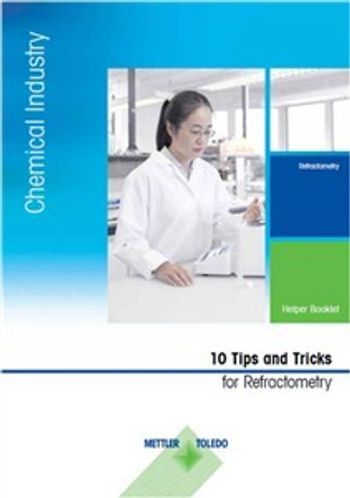
As a service to its chemical industry laboratory partners, METTLER TOLEDO is pleased to announce some simple yet effective tips and tricks to ensure accurate refractive index determination.
The refractive index is normally determined as a part of the characterization of liquid samples. It helps to identify or confirm the identity of samples, to determine the concentration of a solute in a solution and to assess the purity of a sample. While the principle is straightforward, measurement can sometimes be tricky, especially if the operator is not experienced. However, there are quite a few tips and tricks that can greatly help to improve results and simplify the process, including:
Use Enough Sample
The prism has to be covered with the sample, as otherwise light scattered by air may hit the Charge-Coupled Device (CCD) sensor and influence the result.
Organic Solvents
The surface tension of organic solvents or samples containing organic solvents such as ethanol or acetone is low compared to water. Such samples act as wetting agents and form a concave meniscus. Thus, add more sample to achieve sufficient filling height of the prism.
Removal of Sample and Rinsing Solvents
To remove sample or rinsing solvents from the refractometer, it is suggested to use a syringe without needle to suck in the liquid. This syringe can be used multiple times, but we suggest to mark it, for instance with black tape. Using a syringe saves a lot of soft tissue cleaning wipes and reduces waste. Instead of utilizing cheap two-component syringes, it is suggested to use three-component syringes (with rubber O-ring), which allow for smooth sucking up of waste.
Sample Temperature
Differences in the temperature of the prism and the sample will influence your results. Always allow for sufficient time for temperatures of sample and prism to adjust. Digital meters with built-in thermostat automatically wait for temperature equilibration before taking the result.
The booklet can be downloaded from here: http://glo.mt.com/global/en/
